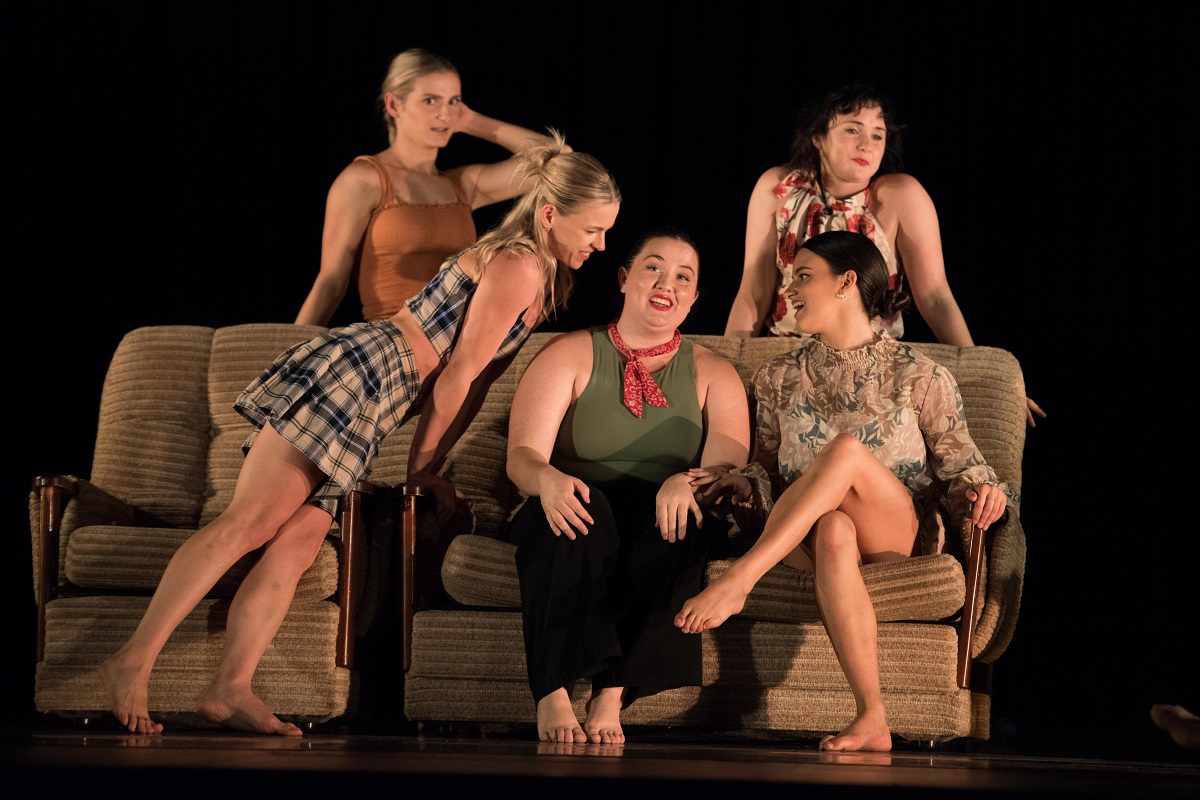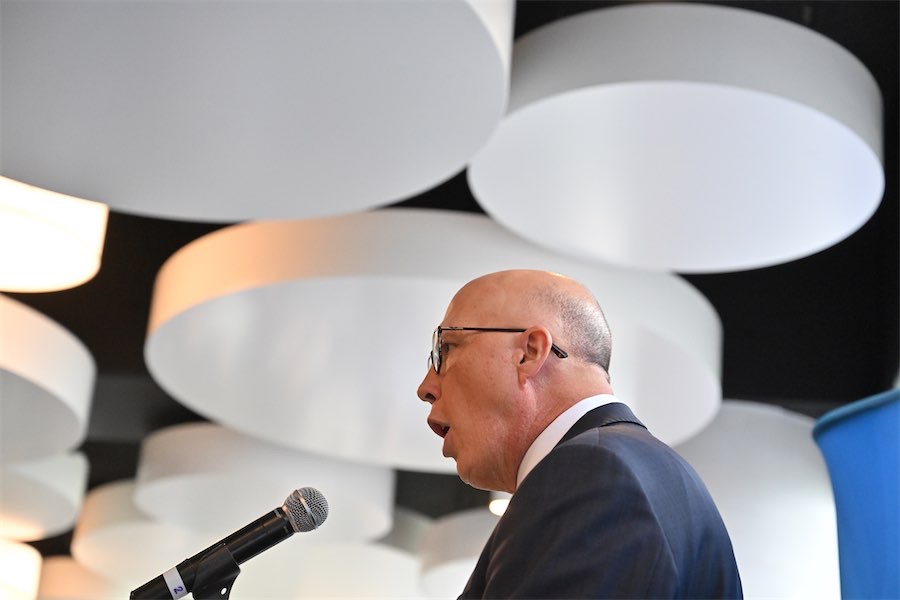
Dance / Awkward, Catapult Dance Choreographic Hub. At The B, Queanbeyan Performing Arts Centre, March 27. Reviewed by MICHELLE POTTER.
In just one performance in The B, a former Bicentennial Hall renovated to become a theatre space, the Newcastle-based Catapult Dance Choreographic Hub presented Awkward, a work with a focus on “The wit and wisdom of the socially awkward”.
In essence, Awkward set out to be a multi-disciplinary work with a strong dance component but centring on a spoken narrative about an event to which six young people, unknown at first to each other, arrived to party together.
Some were shy, others weren’t. Some made an effort to connect, others didn’t. A kind of compere, the seventh person in the story, explained to the arrivals how they should behave at such an event, what to do with the eyes when talking to someone new, for example. We watched as the young people slowly began to interact with each other. Sometimes the effort to interact worked, sometimes it didn’t, so there was much changing of relationships.
Interaction was most often expressed through dancing, which was performed to popular songs from around the 1980s and 1990s. The songs and the narrative were often closely connected in theme and the choreography, by Cadi McCarthy, a co-director of the Catapult company, was distinguished by some eye-catching lifts and partnering, and tumbles and turns in a grounded contemporary style. The performers, Jordan Bretherton, Cassidy Clarke, Alexandra Ford, Nicola Ford, Romain Hassanin, Remy Rochester, and Anna McCulla, all danced well and performed with strong stage presence.
It was a shame, however, that the performance was as long as it was – it lasted around 75 minutes. After a while the choreography started to look repetitive and Awkward could have been 15 or 20 minutes shorter and saved itself from losing its power.
The multi-disciplinary nature of the work was somewhat problematic, too. While the “compere” took a significant role in the early part of Awkward, the narrative disappeared somewhat as the work progressed and dance took over. I preferred the dance component to the narrative element, which often seemed not so much funny (although much of the audience laughed and laughed) as a little pathetic. But, more importantly, the loss, or lessening of the narrative meant that the intrinsic nature of the work as established at the beginning was lost.
The B provided an interesting space for the work. Two levels were used – a relatively small, raised stage became a living area on which the dancers engaged with each other, on and around several lounge chairs, while in front of the stage at ground level was the bar area and the dance floor. Steps on either side of the ground level space led up to the raised area and the dancers used both spaces equally and effectively.
Awkward began as a kind of “total work of art” (Gesamtkunstwerk to use the early name for that idea). But slowly Awkward lost that quality, or the idea of totality was significantly lessened. As a result, and unfortunately although the potential was there, the work was uneven in the way it was presented. And, again unfortunately, Awkward was too long. A shortened work and a more consistent approach would have added an ongoing strength to the work.
Who can be trusted?
In a world of spin and confusion, there’s never been a more important time to support independent journalism in Canberra.
If you trust our work online and want to enforce the power of independent voices, I invite you to make a small contribution.
Every dollar of support is invested back into our journalism to help keep citynews.com.au strong and free.
Thank you,
Ian Meikle, editor








Leave a Reply